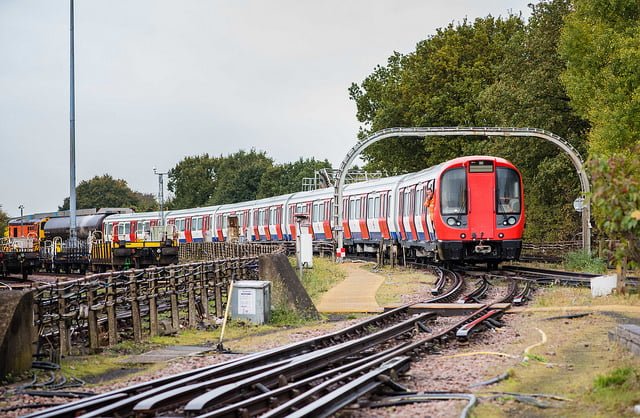Transport for London (TfL) has entered a partnership with Spinview, an advanced digital-twin start-up company, for the supply of cutting-edge technology that will enable smarter, safer, and more efficient management of London Underground's assets.
Digital-twin is a digital replica or representation of a physical object that can be examined, altered, and tested without interacting with it in the real world, thereby avoiding negative consequences.
As well as digital monitoring of tracks and tunnels, it will also provide data on noise and heat levels and carbon emissions.
The Government's Smart Grant will fund the partnership awarded to Spinview, and will support the Mayor of London's ambition for a zero-carbon railway by 2030. Initially, the focus will be on the Piccadilly Line, which is one of the Underground's ‘deep tube' lines with the track in some locations 30m below ground. As such, it is particularly suited to trialling the technology, including an innovative capture and scanning device.
Sustainability is an important part of the project. The technology will provide vast amounts of data to employees across TfL so that they can better manage assets, drive forward business efficiencies, and reach environmental targets.
Spinview will utilise its unique VQecosystem and the visual intelligence it enables to provide TfL with a digital model, data, and tools so that the Deep Tube environment can be managed in a smarter, safer, and more streamlined way.
Another Spinview product, the Deep Rail Sensor (DRS) device, will capture the geometry of a space and ‘sniff out' any environmental pollutants. It will also establish a baseline for TfL's current carbon emissions so that the progress of its important environmental goals can be measured and tracked.
Besides supporting TfL's ongoing carbon baselining workstreams, DRS can also be applied to other environmental factors across the network, including noise and heat emissions.
Until now, the deep tube has been notoriously challenging to map in detail, but Spinview's digital twin will provide TfL with a detailed and easily accessible visual recreation of the environment. Its key features include a real-world replica that will reveal information that may have been hidden from the human eye, such as identifying faults, locating heat hotspots, and pinpointing where noise is coming from. TfL could then utilise this data to make targeted improvements to the Tube network, providing more comfortable customer journeys.
Opening up complex data sets will support TfL through a project's entire life cycle, from surveying, planning, designing, and upgrading, to virtual approvals from TfL's senior managers.
The VQecosystem will allow employees and contractors to work from a virtual environment at any time. It avoids the need to physically go below ground during limited time slots, so that TfL's staff will no longer be restricted to physically inspecting and surveying assets below ground between the engineering hours of 01:00-05:00. Instead, they will be able to conduct surveys, assess the health of a location, and make decisions at any time through the Spinview interface.
Linda Wade, Co-founder and CEO of Spinview, says: “We are thrilled to support TfL in its ambitions to achieve a zero-carbon railway by 2030. By establishing a visually intelligent ecosystem for TfL, Spinview hopes to not only help TfL in tracking its environmental goals, but also to support in facilitating better decision-making, driving forward business efficiencies, saving costs and future-proofing the network in the long-term.”
Paul Judge, Director of the Piccadilly Line Upgrade project, at TfL, says: “This partnership with Spinview offers us a really exciting opportunity to gain real-time access to our assets on the Underground network, many of which we can currently only inspect during engineering hours. Not only will using digital-twin technology support the smarter, more efficient maintenance of the railway, it will also enable us to more accurately monitor environmental challenges such as carbon emissions, noise levels and heat as we strive to do more to lessen our carbon footprint and help tackle the climate emergency. This is another example of us working with a wide range of market innovators to stay at the forefront of technology.”
